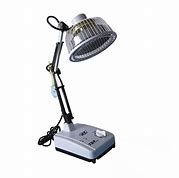Last Updated on 12 months by Francis
EMF stands for electromagnetic fields. They are invisible areas of energy that surround electronic devices and electrical systems. In buildings, EMF can come from sources such as electrical wiring, appliances, and telecommunications equipment. EMF is a potential concern because it can affect human health. Some people are sensitive to EMF and may experience symptoms such as headaches, fatigue, and dizziness. Additionally, there is some evidence that exposure to high levels of EMF may increase the risk of certain cancers, such as leukemia. For these reasons, it is important for building owners and occupants to be aware of EMF and take steps to minimize exposure.
Contents
The Basics of EMF
Electromagnetic fields or EMF are invisible areas of energy that are present in the natural world and human-made environments. EMFs are created when electric current flows through a conductor, such as a wire, and produce magnetic fields.
EMFs are classified into two categories: non-ionizing and ionizing. Non-ionizing EMFs are low-level radiation and are not strong enough to ionize atoms and molecules in the body. Examples of non-ionizing EMFs include radiofrequency radiation, power frequency fields, and static electric and magnetic fields.
On the other hand, ionizing EMFs are high-level radiation and can ionize atoms and molecules in the body, leading to cell damage and cancer. Examples of ionizing EMFs include X-rays and gamma rays.
Sources of EMF in Buildings
In buildings, EMFs can come from various sources, including electrical wiring, appliances, and electronic devices. Power lines outside buildings can also produce EMFs.
The strength of EMFs depends on the distance from the source and the amount of current flowing through the conductor.
One key takeaway from this text is that while there are potential health concerns related to exposure to electromagnetic fields (EMFs) from various sources in buildings, the evidence for health effects is inconclusive. To reduce exposure to EMFs, building design and electrical systems can be optimized, and individuals can take steps such as reducing use of wireless devices, using wired connections, and keeping phones away from their bodies. Safety guidelines established by organizations such as the International Commission on Non-Ionizing Radiation Protection (ICNIRP) and the Federal Communications Commission (FCC) aim to protect against known health effects of EMF exposure.
Potential Health Effects of EMF
The potential health effects of EMF exposure have been a subject of debate for many years. Some studies suggest that exposure to high levels of EMFs may increase the risk of cancer, especially childhood leukemia. However, the evidence is not conclusive, and many studies have shown no link between EMF exposure and cancer.
Other potential health effects of EMF exposure include headaches, fatigue, sleep disturbances, and decreased immune function. However, the evidence for these effects is also inconclusive.
One key takeaway from this text is that EMFs (or electromagnetic fields) are present in both natural and human-made environments, and can be a potential concern in buildings due to their various sources and potential health effects. However, there are safety standards and ways to reduce exposure to EMFs, such as using shielded wiring and grounded electrical systems, and choosing building materials that block EMFs.
EMF Safety Standards
To ensure the safety of EMF exposure, various organizations have established safety standards. The International Commission on Non-Ionizing Radiation Protection (ICNIRP) sets guidelines for EMF exposure for the general public and workers. These guidelines are based on the latest scientific research and aim to protect against known health effects of EMF exposure.
In the United States, the Federal Communications Commission (FCC) sets guidelines for radiofrequency radiation exposure from wireless devices. The Occupational Safety and Health Administration (OSHA) sets guidelines for EMF exposure in the workplace.
Key takeaway: EMFs are invisible areas of energy that can be found in natural and human-made environments. While some studies suggest that high levels of EMF exposure may have negative health effects, the evidence is not conclusive. To ensure safety, various organizations have established safety standards and building design can play a role in reducing EMF exposure. Tips to reduce exposure include minimizing use of wireless devices, using wired connections, and choosing building materials that block EMFs.
EMF and Building Design
Building design can play a significant role in reducing EMF exposure. Some building materials, such as metal, can amplify EMF exposure, while others, such as concrete and earth, can block EMFs.
In addition, building wiring and electrical systems can be designed to minimize EMF exposure. Shielded wiring and grounded electrical systems can help reduce EMF exposure.
EMF and Health
EMF Safety Standards
EMF and Buildings
EMFs can be a potential concern in buildings due to their various sources and potential health effects. The strength of EMFs depends on the distance from the source and the amount of current flowing through the conductor.
Tips to Reduce EMF Exposure
Here are some tips to reduce your exposure to EMFs:
- Reduce your use of wireless devices and keep them away from your body.
- Use wired connections instead of Wi-Fi whenever possible.
- Turn off your Wi-Fi at night.
- Use a wired headset instead of holding your phone to your ear.
- Keep your phone away from your body when it’s in your pocket or bag.
- Use a laptop pad that blocks EMF radiation.
- Avoid using electric blankets and heating pads.
- Use shielded wiring and grounded electrical systems in your building.
- Choose building materials that block EMFs, such as concrete and earth.
FAQs: What Is EMF and Why Is It a Potential Concern in Buildings?
What is EMF?
EMF stands for electromagnetic fields, which are a form of energy that surrounds and radiates from electronic devices and electrical systems. EMF can be caused by power lines, appliances, Wi-Fi routers, and other items that use electricity.
Why is EMF a potential concern in buildings?
EMF exposure has been linked to a variety of health concerns, including headaches, fatigue, and sleep disturbances. Some studies have suggested a link between EMF exposure and more serious health conditions such as cancer, although the evidence is limited and inconclusive. Nevertheless, because we are constantly surrounded by electronic devices, we are exposed to a significant amount of EMF each day.
Are some buildings more at risk for high EMF levels?
Yes, buildings located near high-voltage power lines or cellular towers may have higher levels of EMF than buildings located farther away from these sources. Additionally, buildings with a large number of electronic devices, such as hospitals, data centers, and research facilities, may also have higher levels of EMF.
How can I reduce my exposure to EMF in buildings?
There are several ways to reduce your exposure to EMF in buildings. One way is to keep electronic devices, such as cellphones and Wi-Fi routers, at a safe distance, particularly when you are sleeping. You can also use EMF shielding devices, such as Faraday cages, to block or reduce the EMF emissions from electronic devices. Additionally, many materials, such as metal, can act as a shield against EMF. You may also want to consider having an EMF inspection carried out on your building, particularly if you are concerned about high levels of exposure.


.jpg)





